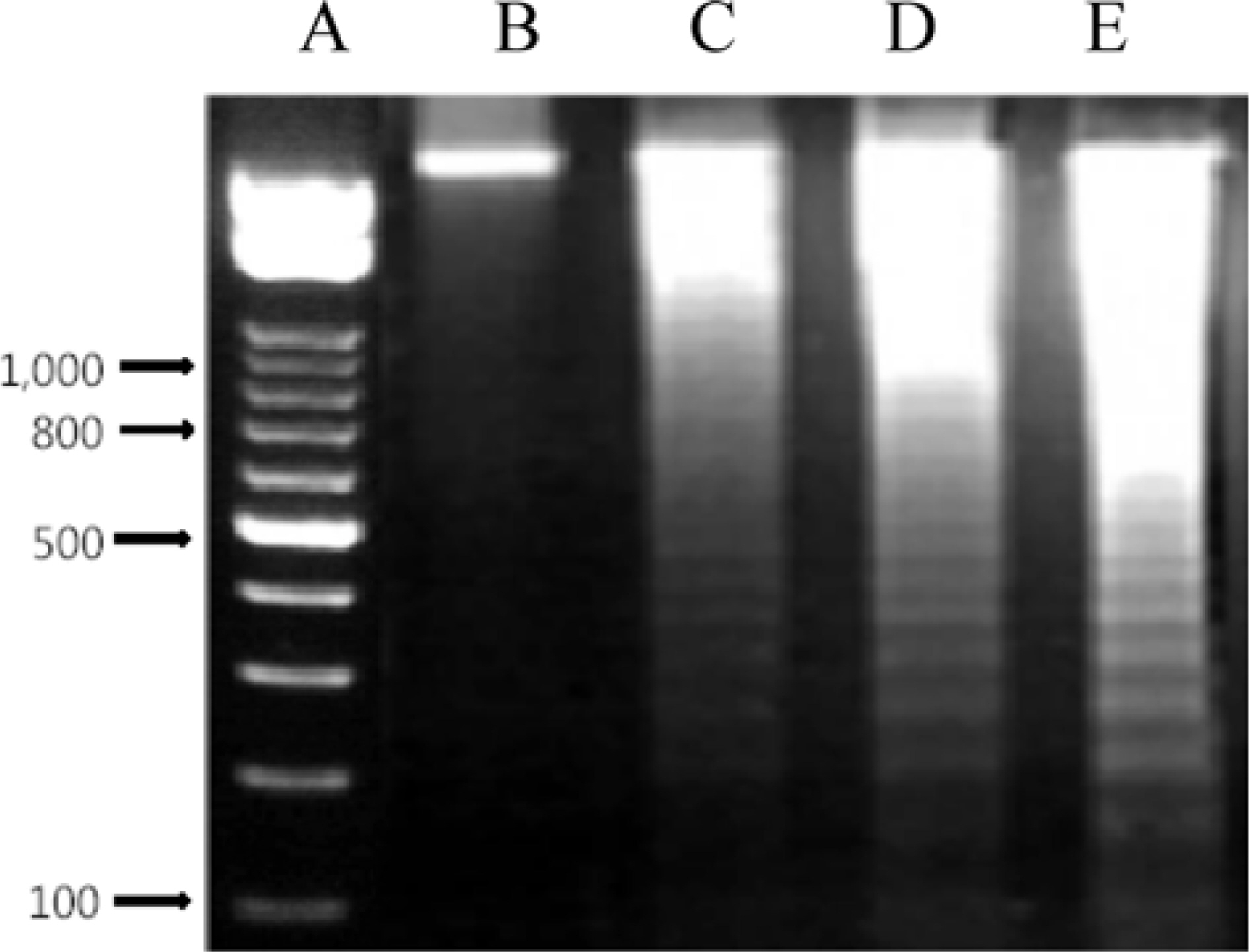Nat Prod Sci.
2017 Dec;23(4):281-285. 10.20307/nps.2017.23.4.281.
Anti-tumor Activity of Saussurea laniceps against Pancreas Adenocarcinoma
- Affiliations
-
- 1Keyong Ho Lee, Across, Chuncheon 24398, Korea.
- 2College of Industrial Sciences, Kongju National University, Yesan 32439, Korea. bskim@kongju.ac.kr howard@kongju.ac.kr
- KMID: 2401581
- DOI: http://doi.org/10.20307/nps.2017.23.4.281
Abstract
- The purpose of this study was to confirm the anti-tumor activity of an ethanol extract of Saussurea laniceps against pancreatic tumor and to isolate the active compound from S.laniceps extract. Treatment with S.laniceps extract and hispidulin inhibited proliferation of pancreatic cell lines, such as Capan-1, Capan-2, Panc-1 and S2-013 in a dose-dependent manner using the hollow fiber assay. Hispidulin showed typical hallmarks of apoptotic cell death a significant anti-tumor activity on Capan-2 cells at a dose of 100 mg/kg and 200 mg/kg. S.laniceps has potential cytotoxic and apoptotic effects on human pancreatic carcinoma cells. Its mechanism of action might be associated with the apoptotic cell death through DNA fragmentation.
MeSH Terms
Figure
Reference
-
References
(1). Chen Q.L.., Chen X.Y.., Zhu L.., Chen H.B.., Ho H.M.., Yeung W.P.., Zhao Z.Z.., Yi T.Phytochem. Rev. 2016. 15:537–565.(2). Li J. S.., Cai S. Q.Chin. Pharm. J. 1998. 33:449–451.(3). Zou X. W.., Liu D.., Liu Y. P.., Xiu Z. L.., Xiao H. B.Chin. J. Nat. Med. 2015. 13:295–298.(4). Jia J. M.., Wu C. F.., Liu W.., Yu H.., Hao Y.., Zheng J. H.., Ji Y. R.Biol. Pharm. Bull. 2005. 28:1612–1614.(5). Min B. S.., Kim Y. H.., Lee S. M.., Jung H. J.., Lee J. S.., Na M. K.., Lee C. O.., Lee J. P.., Bae K.Arch. Pharm. Res. 2000. 23:155–158.(6). Byambaragchaa M.., de la Cruz J.., Yang S. H.., Hwang S. G.AsianPac. J. Cancer Prev. 2013. 14:5397–5402.(7). Byambaragchaa M.., Dela Cruz J.., Kh A.., Hwang S. G.AsianPac. J. Cancer Prev. 2014. 15:7527–7532.(8). Casciari J. J.., Hollingshead M. G.., Alley M.C.., Mayo J. G.., Malspeis L.., Miyauchi S.., Grever M. R.., Weinstein J. N. J.Natl. Cancer Inst. 1994. 86:1846–1852.(9). Ishiyama M.., Miyazono, Y,; Sasamoto K.., Ohkura Y.., Ueno K.Talanta. 1997. 44:1299–1305.(10). Lee K. H.., Rhee K. H.Cancer Res. Treat. 2005. 37:196–200.(11). Stewart B. W.., Wild C. P.World Cancer Report 2014; World Health Organization:. 2014. , Chapter 5, 7.(12). Taraphdar A. K.., Roy M.., Bhattacharya R. K.Curr. Sci. 2001. 80:1387–1396.(13). Yi T.., Lo H.., Zhao Z.., Yu Z.., Yang Z.., Chen H.Molecules. 2012. 17:7183–7194.(14). Yu C. Y.., Su K. Y.., Lee P. L.., Jhan J. Y.., Tsao P. H.., Chan D. C.., Chen Y. L.Evid. Based Complement. Alternat. Med. 2013. 2013:1–13.
- Full Text Links
- Actions
-
Cited
- CITED
-
- Close
- Share
- Similar articles
-
- A Case of Mucinous Cystic Adenocarcinoma of the Pancreas
- Ductal Adenocarcinoma Arising from the Heterotopic Pancreas Situated in the Jejunum
- Ductal Adenocarcinoma Arising from Heterotopic Pancreas in the Stomach: A Case Report
- Expression of Matrix Metalloproteinase-2 (MMP-2) and Tissue Inhibitor of Metalloproteinase-2 (TIMP-2) in Pancreatic Ductal Adenocarcinoma
- Recent Update of Pathology of the Pancreatic Neuroendocrine Tumor




